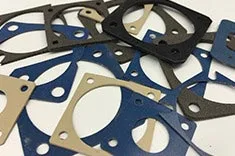EMI Shielding Products
- Custom Gasket Fabrication
- Connector Gaskets
- Bonded O Ring
- Custom Gaskets
- Conduct-O-Knit Knitted Wire Mesh
- Conduct-O-Seal Combo Gasket
- Conduct-O-Elastomer
- Conduct-O-Seal Oriented Wire in Silicone Gasket Material
- Conduct-O-Mesh Tape
- Conduct-O-Foam
- Conduct-O-Bond
- Optical Filters For Electronic Displays
- Shielded Vent Panels
- 300 Series
What are the Differences Between EMI Shields and EMI Filters
With each passing year, our world is becoming more digital. Electronic devices play a central role in the life of most individuals in the United States, whether it be a computer for work, a phone for connections, or video games for entertainment. Most consumers tend to not think about EMI and RFI because they never see it. They never really experience it because designers and engineers utilize EMI shields and RFI shields to protect the integrity of electronic devices.

Shields and filters are the two primary ways of blocking harmful electromagnetic interference.
If an electronic device receives electromagnetic waves (without protection) it causes the electrical currents to be induced within the circuit. Ultimately, this causes a disruption in intended operations. If met with a strong enough wave, electronic devices could be potentially damaged. If you have ever experienced a loss of reception, a disrupted video, or an abnormal noise, you have experienced electromagnetic interference.
EMI and RFI shielding surrounds objects with a conductive metal plate (or other form of protective block). These shields block radiated emission from getting past desired points. Shielding is an ideal choice because it protects devices from emitting radiation into the surrounding area.
EMI RFI Shielding
Filters remove any unwanted components while letting necessary ones through. Unwanted noise gets diverted to the ground, returned, or absorbed to its origin. There are two parts to an EMI filter (inductors and capacitors) that work in tangent to reduce EMI. Filters work best when there are issues with penetration through the shield. Filters protect outputs and inputs, which are often thought of as the most vulnerable point of a shielded system.
Related Reading
- How Does EMI Shielding Work?In the electrical engineering world, EMI shielding is one of the most important resources to ensure electronics function properly. Electronic devices (medical and recreational) are susceptible to performance failure as a result of electromagnetic interference.
- Preventing Interference with RFI Shields and RFI Filters
- What is the Difference Between EMI and RFI



